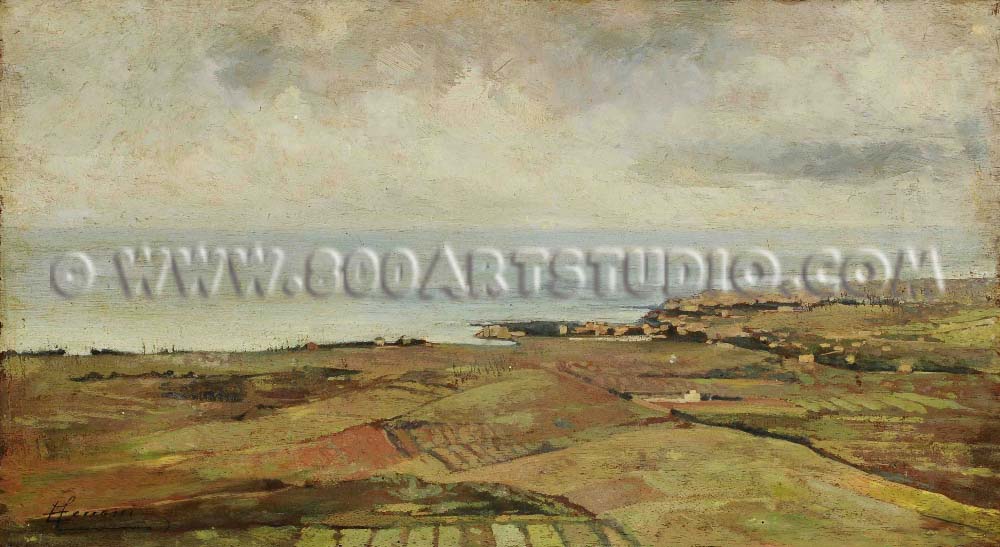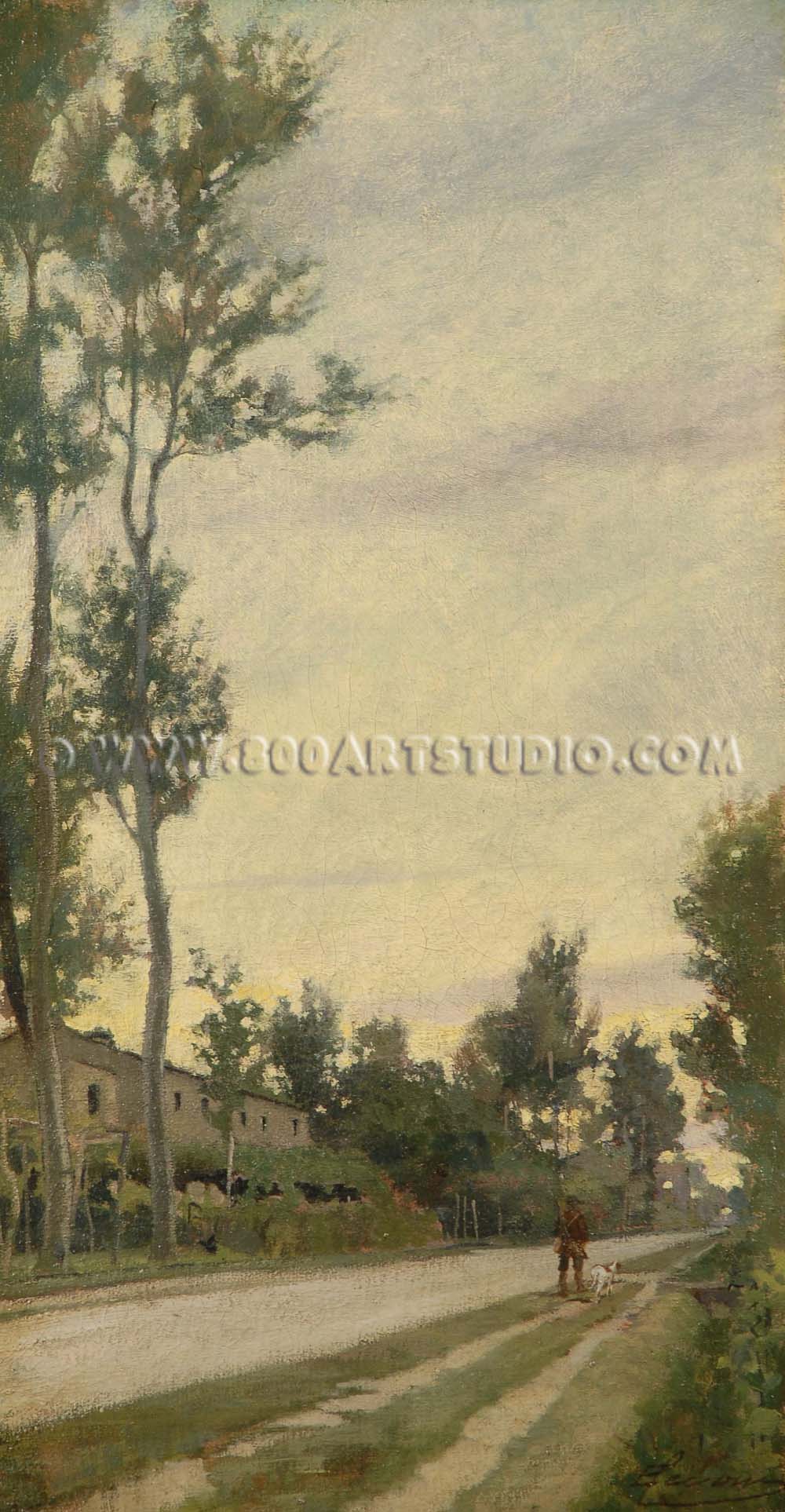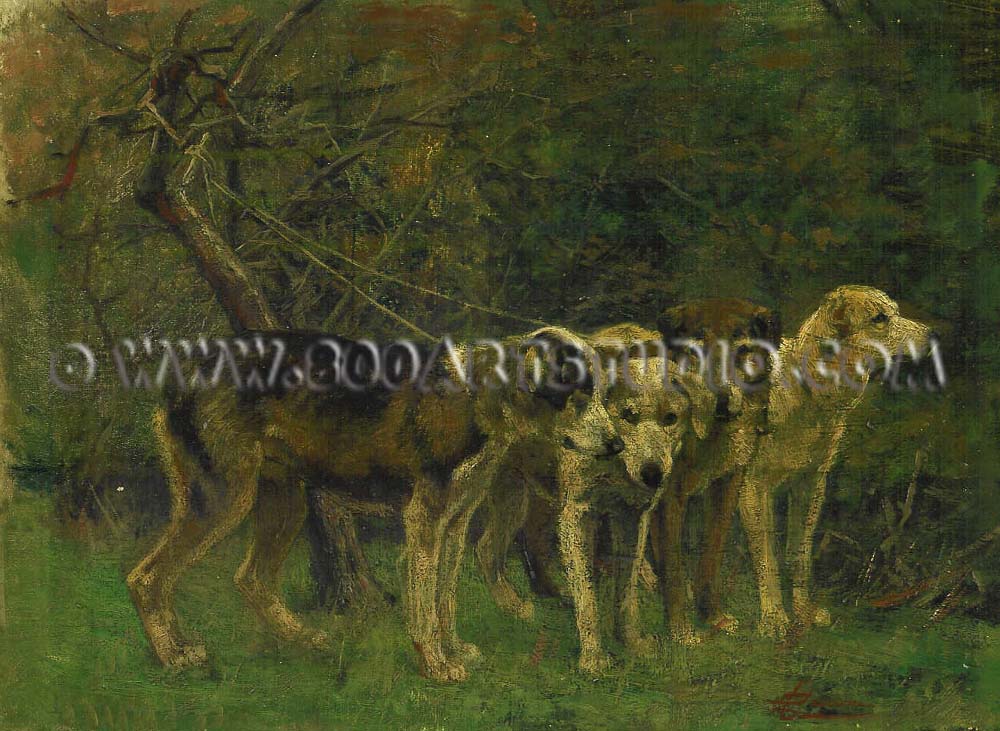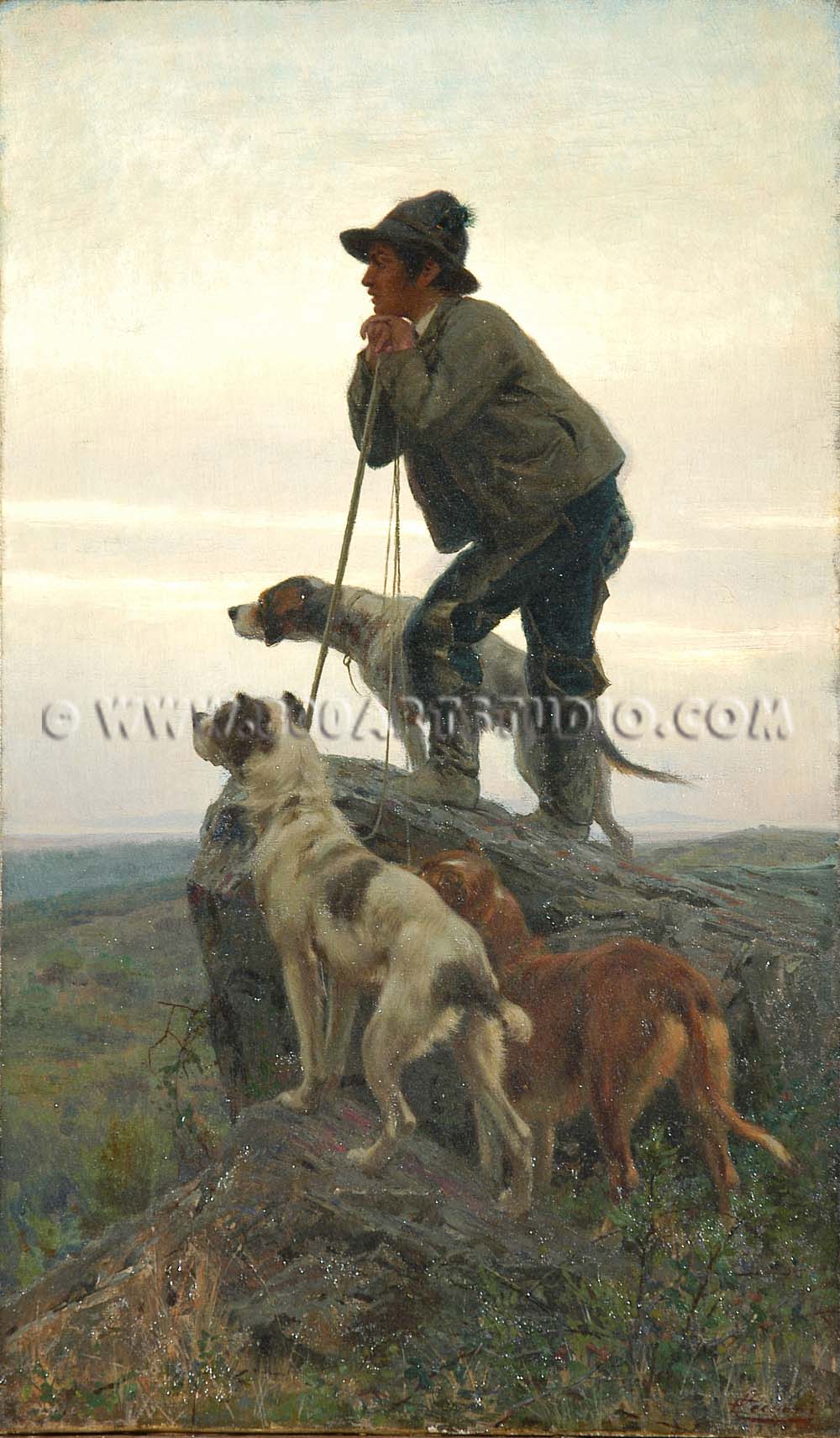Born in Leghorn into a well-off family, after having spent his childhood in Piedmont, he followed his father’s will and took a degree in law at the Pisa University. While he was articled to a lawyer in Florence, he followed Pollastrini’s lessons at the Accademia. The sudden death of his father in 1865 permitted him to abandon the legal profession and to dedicate himself completely to art.
Back in Leghorn, he rented a study with Giovanni Belimbau and became friend with Diego Martelli, who invited him in Castiglioncello, where working close to Giovanni Boldini, Luigi Bachi and above all Giuseppe Abbati, he made fundamental experiences for his artistic training. In 1869 he exhibited at the Turin Promotrice and in 1872 at the Milan National Exhibition, meeting with a certain success with the “Macchiaiole di Tombolo” (Macchiaiole of the lace pillow”). In 1875 he went to Tunisia – probably with Giovanni Belimbau – coming back with a big number of studies and impressions.
He stayed in Lari and Torre del Lago where, alternating painting and hunting, he cemented his friendship with Francesco Gioli and went through a very prolific artistic period: he painted “Caccia alle folaghe nel lago di Massaciuccoli” (Coot hunting by the Massaciuccoli lake) and in 1881, the well-known canvas “Le cenciaiole” (The rag-and-bone-woman). In 1880, at the first Modern paintings show of the Donatello Society of Florence, he exhibited “Il riposo” (The rest), which was appreciated by Telemaco Signorini; the following year he participated in the Florence Promotrice and decided to move there. During the Eighties he painted famous works like “La caccia al cinghiale nel padule di Burano” (The boar shooting in the Burano marsh) (Florence, Modern Art Gallery of Palazzo Pitti) and “La partenza per la caccia grossa” (Leaving for the big hunt) – Rome, National Gallery of Modern Art-; in 1890 he illustrated “Il matto delle giuncaie” (The madman of the beds of rushes) for the “Neri’s Wakings” of Fucini. After the Eighties, Cecconi’s exhibiting activity became sporadic: in 1900 in Brera, in 1901 in Turin.
He died in Florence December 19, 1903.
Written by: Gioela Massagli – Translated by: Cristina Panigada
© Studio d’Arte dell’800





